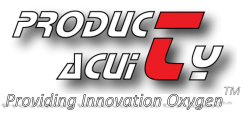Cost Structure
Your Cost Structure describes all costs incurred to operate your business model. Creating and delivering value, maintaining Customer Relationships, and generating revenue all incur costs. Here the focus is on evaluating the cost of these activities. This will be easier to do so once you have defined your key resources, activities, and partners. Some business models are more cost-driven than others. So-called “no frills” airlines, for instance, have built business models entirely around low-Cost Structures.
Questions to address in this section
- What are the most important costs inherent in our business model?
- Which Key Resources are most expensive?
- Which Key Activities are most expensive?
Types of Cost Structure
Naturally enough, costs should be minimized in every business model. But low Cost Structures are more important to some business models than to others. Therefore it can be useful to distinguish between two broad classes of business model Cost Structures: cost-driven and value-driven (many business models fall in between these two extremes):
- Cost-driven - Cost-driven business models focus on minimizing costs wherever possible. This approach aims at creating and maintaining the leanest possible Cost Structure, using low price Value Propositions, maximum automation, and extensive outsourcing. No frills airlines, such as Southwest, EasyJet, and Ryanair typify cost-driven business models.
- Value-driven - Some companies are less concerned with the cost implications of a particular business model design, and instead focus on value creation. Premium Value Propositions and a high degree of personalized service usually characterize value-driven business models. Luxury hotels, with their lavish facilities and exclusive services, fall into this category.
Cost Structure Attributes
A Cost Structures can have the following attributes:
- Economies of Scale - Cost advantages that a business enjoys as its output expands. Larger companies, for instance, benefit from lower bulk purchase rates. This and other factors cause average cost per unit to fall as output rises.
- Economies of Scope - Cost advantages that a business enjoys due to a larger scope of operations. In a large enterprise, for example, the same marketing activities or Distribution Channels may support multiple products.
- Fixed cost - Costs that remain the same despite the volume of goods or services produced. Examples include salaries, rents, and physical manufacturing facilities. Some businesses, such as manufacturing companies, are characterized by a high proportion of fixed costs.
- Variable cost - Costs that vary proportionally with the volume of goods or services produced. Some businesses, such as music festivals, are characterized by a high proportion of variable costs.
